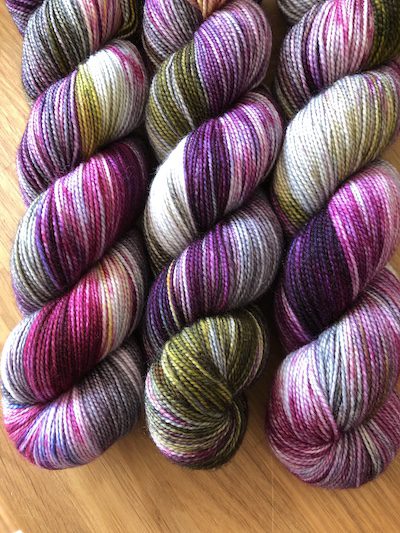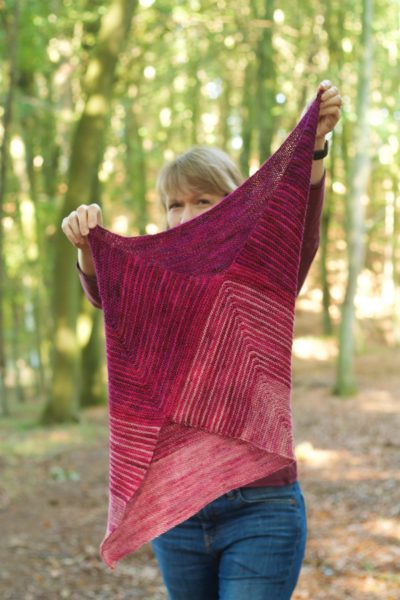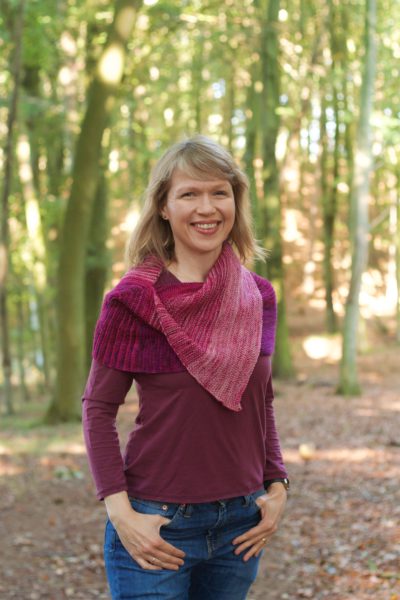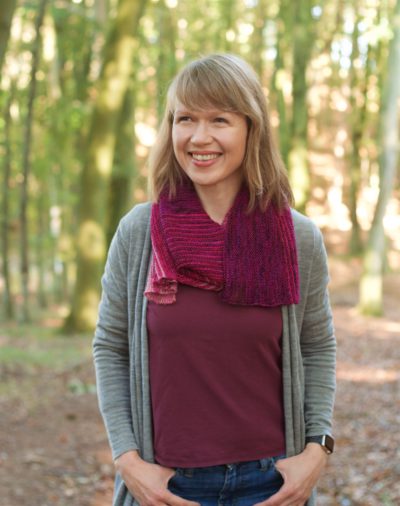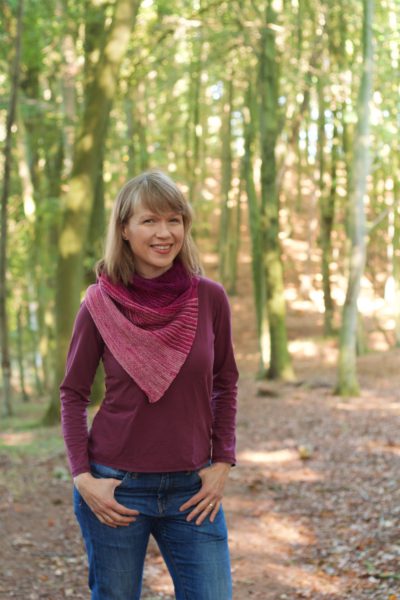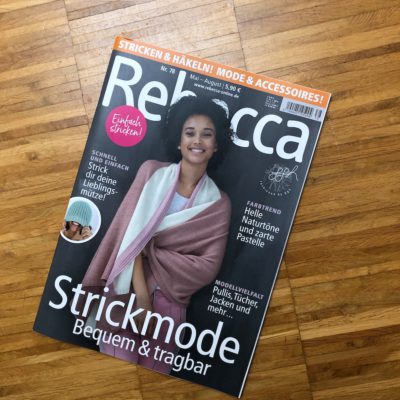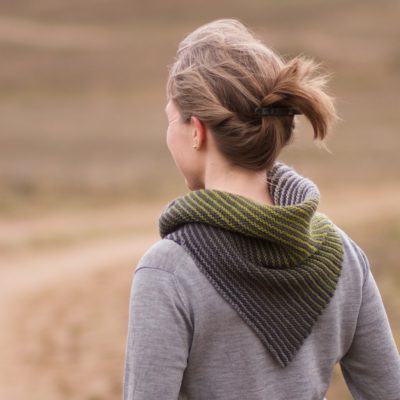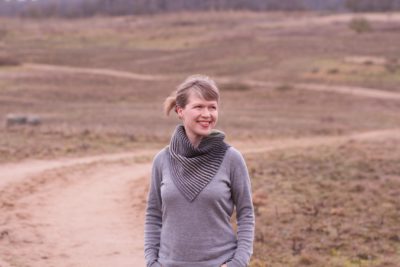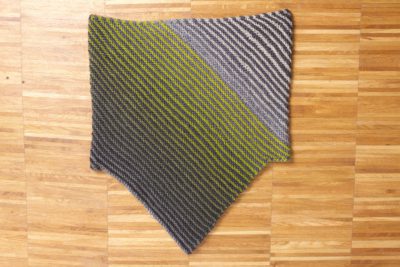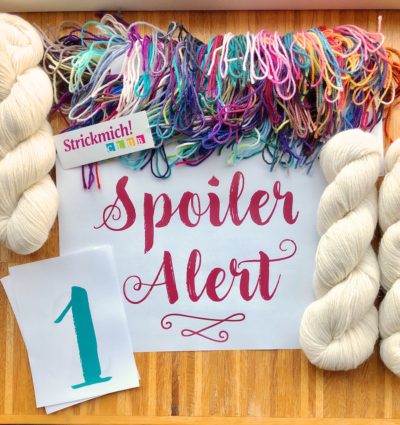Our next Knitting Events
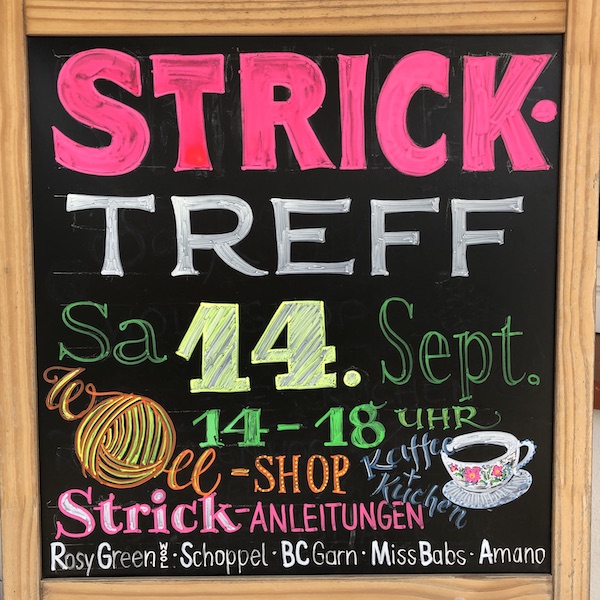
Come and knit with me! In our beautiful old pub in the middle of Schleswig-Holstein we serve homemade yummy cakes and good coffee. In our Mini-Shop you will find Martina’s books and patterns, yarns by Rohrspatz & Wollmeise, Rosy Green Wool, Amano, Schoppel, BC Garn, Manos del Uruguay and Miss Babs – we got a new shipment with the most amazing colors (which are also available online)!
From 2 to 6 pm we will open our doors for enthusiastic knitters, and before that, we will host the Cast-on Events for Strickmich! Club: We will unbox the exclusively dyed yarn plus brand new knitting pattern and cast on together. In 2019, the Cast-on Events start at 12 noon, but in 2020 we will move that to 1 pm as it gives those who don’t live close by more time to get here.
Our address is: Dorfstr. 2g, 23824 Damsdorf, Schleswig-Holstein, Germany.
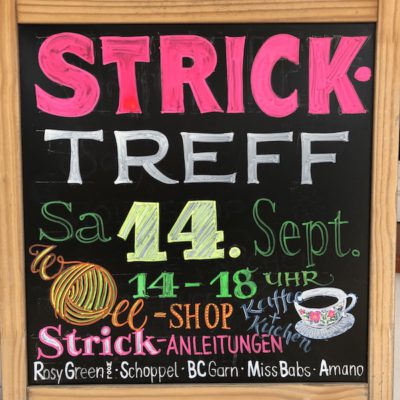
Our next knitting Events:
September 14th 2019
12 noon – 2 pm Cast-On Event for Members of Strickmich! Club,
2 pm – 6 pm Uhr Open Studio – Come and knit with Martina! Everyone is welcome, no reservation necessary.
November 23th 2019
12 noon – 2 pm Cast-On Event for Members of Strickmich! Club,
2 pm – 6 pm Uhr Open Studio – Come and knit with Martina! Everyone is welcome, no reservation necessary.
February 22nd 2020
1 pm – 2 pm Cast-On Event for Members of Strickmich! Club,
2 pm – 6 pm Uhr Open Studio – Come and knit with Martina! Everyone is welcome, no reservation necessary.
May 23rd 2020
1 pm – 2 pm Cast-On Event for Members of Strickmich! Club,
2 pm – 6 pm Uhr Open Studio – Come and knit with Martina! Everyone is welcome, no reservation necessary.
September 19th 2020
1 pm – 2 pm Cast-On Event for Members of Strickmich! Club,
2 pm – 6 pm Uhr Open Studio – Come and knit with Martina! Everyone is welcome, no reservation necessary.
November 21st 2020
1 pm – 2 pm Cast-On Event for Members of Strickmich! Club,
2 pm – 6 pm Uhr Open Studio – Come and knit with Martina! Everyone is welcome, no reservation necessary.
Berry Skies
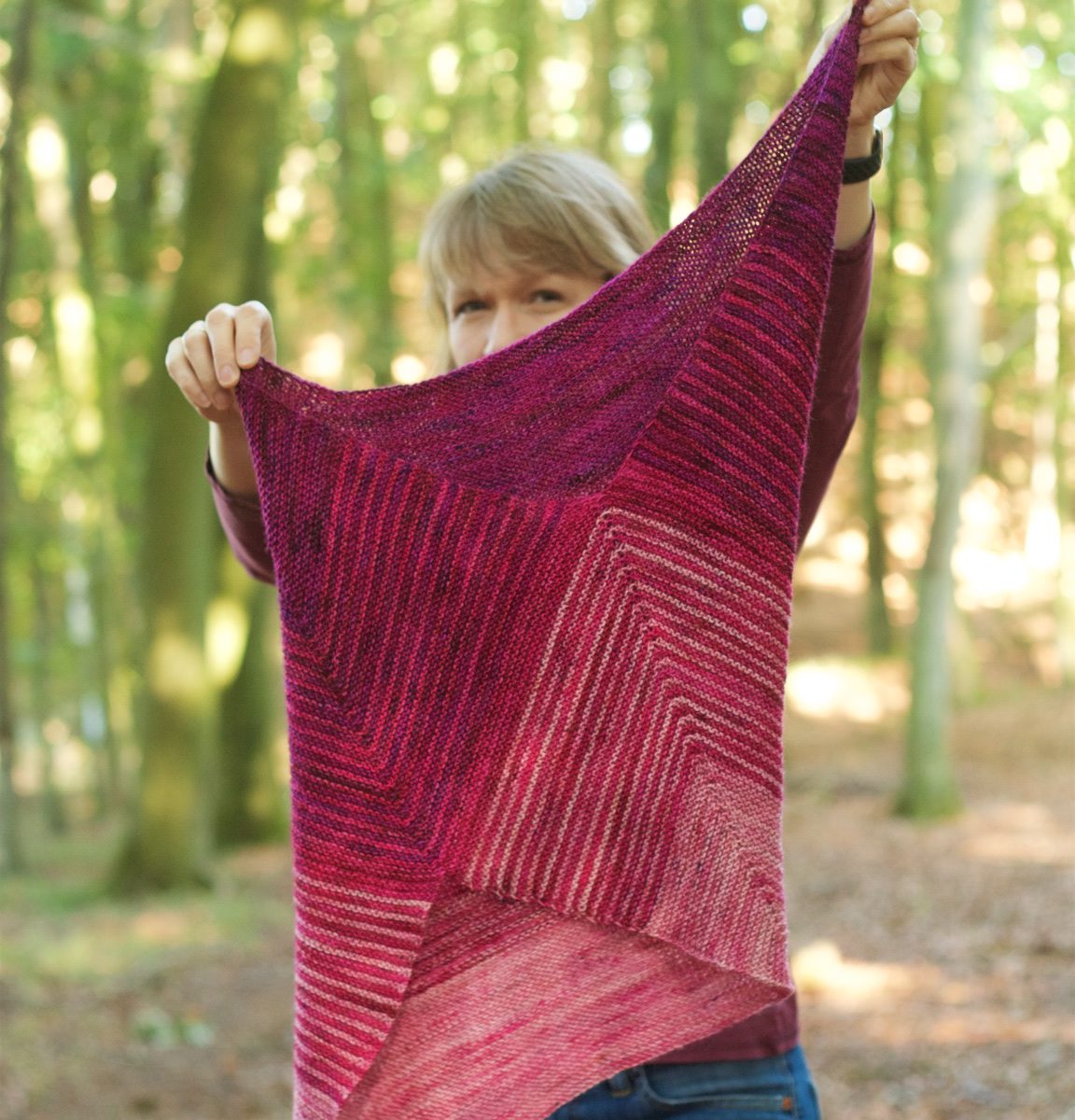
A cowl that looks like a scarf that looks like a shawl, is an easy-peasy knit and has an unusual construction, accentuated by stripes in my most beloved colors – that sounds like a new favorite project of mine, and that’s exactly what “Berry Skies” is! I have been playing around with different ways of making cowls, and this one struck me as particularly suited for a “Trio Aquarell” by Dibadu: Three colors with just enough contrast to emphasize the stripes and zig-zags that are in perfect harmony nevertheless – just like clouds in the sky over Damsdorf, my home, at sunset.
The cowl is entirely knit back and forth in garter stitch with only a few purl stitches and minimal ends to weave in when you are done. Depending on which side you decide to wear up, the light or dark colors will show more. Choose your favorite way to wear it, and the geometric zig-zag elements will be more prominent or less, making it one of the most versatile knitted pieces of your wardrobe!
The pattern is available for download on Ravelry and in Strickmich! Shop, where we also carry the printed version and a limited number of kits.
Strickmich! Club Cast-on Video 2-2019
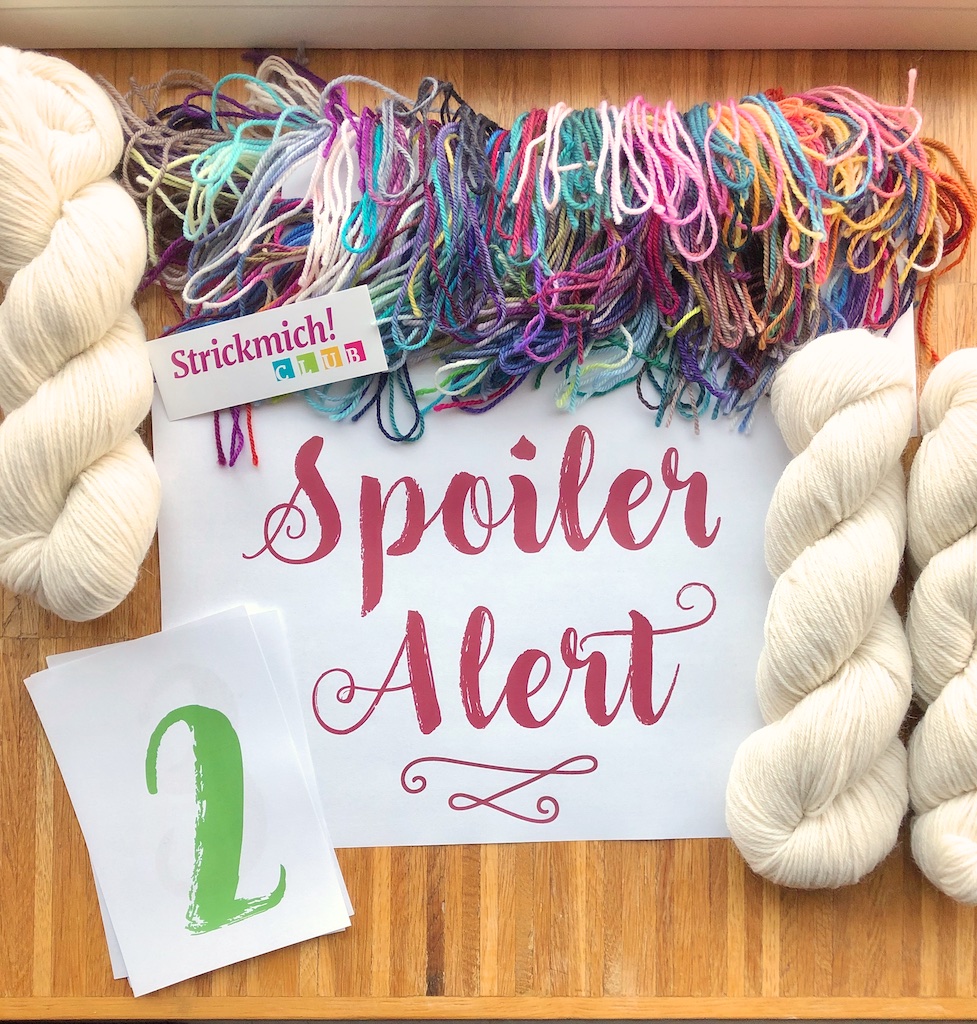
Here’s our second virtual Cast-on Event of Strickmich! Club 2019. Enjoy! (Vimeo-Link, will open in a separate window).
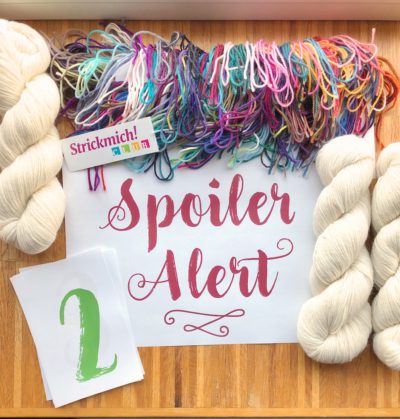
And don’t forget to tune in today at 12 noon German time to see our live Event – we will broadcast it on my youtube channel (link to Youtube).
Knitting Friend to go
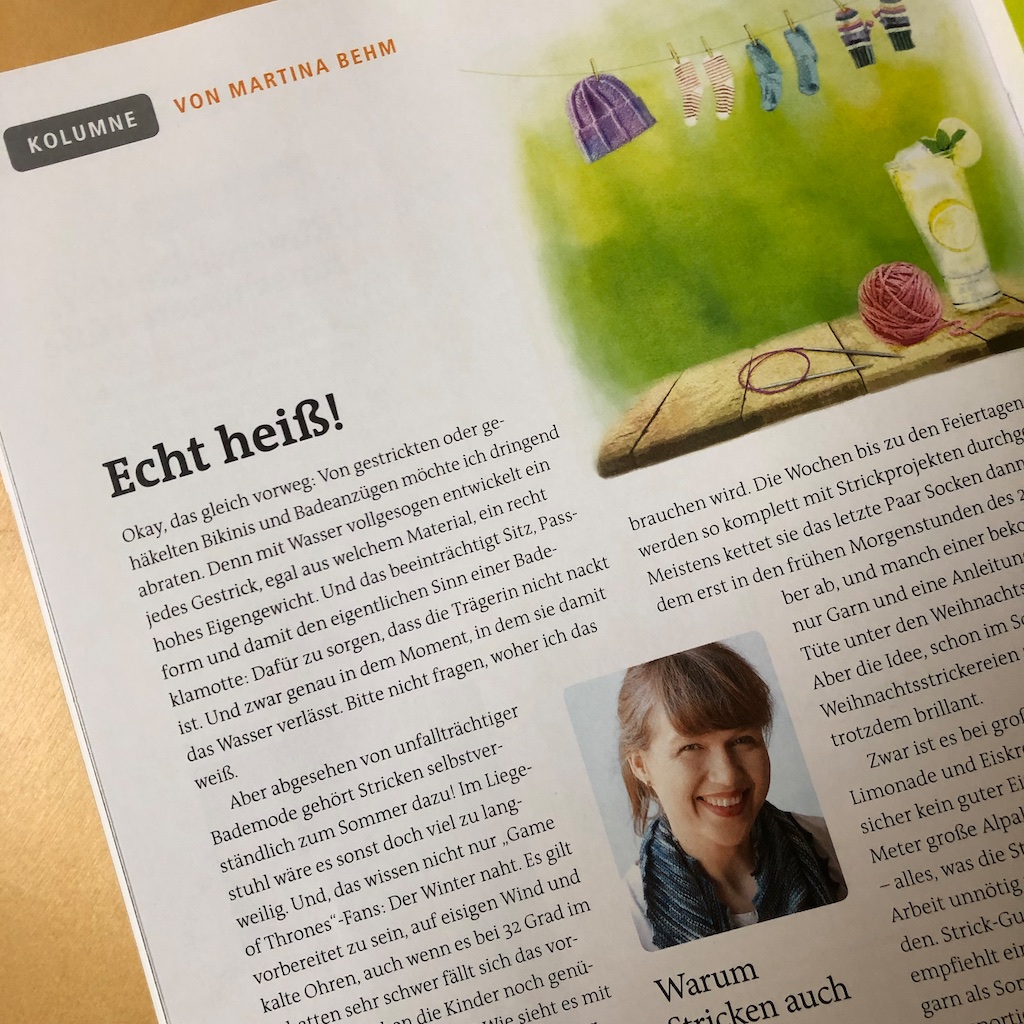
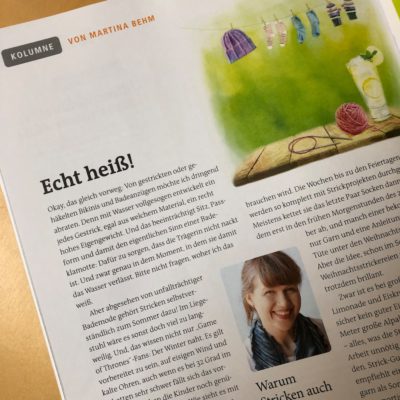
I just love to write. I forget everything around me, and unless someone comes in and interrupts me, I am in flow in no time. When I was a kid, I used to write about mice who fell into pots of blueberry jam and had to spend their lives as purple mice, later I snagged my father’s old completely (i.e. chord-free) mechanical typewriter and wrote on the cheap paper I found in our garage. In school I loved to write long essays in German and history class: Thinking about new topics, gathering ideas and writing everything down, and in the end someone will read it and – best case – say “well done”. In college I still loved writing, but it began to bother me that only one or two people would read my work. I applied for a spot at the Henri Nannen School of Journalism in Hamburg and became a writer at Brigitte Magazine – in the cosmetics department (still don’t know how that happened). Then came the kids, the Hitchhiker, and knitting and knitwear design became my primary creative endeavour, and I find that putting knitting ideas out in the world is just as exiting as writing. But I still love to write: in my blog, in the introductions to my knitting patterns, in my little book “Stricken macht schön” (“Knitting makes you beautiful”), and in my knitting column for Rebecca Magazine (which, unfortunately, is only available in German!). I write about anything that comes to mind about knitting: Why do I only get compliments for old and pilly pieces? Why do all knitting pictures on Instagram look so clean? Do I have to knit a light gray shawl now? Or crochet a bikini? Is there right and wrong when it comes to knitting?
All questions that I love to discuss with my knitting friends at our knitting events here at my house, with a big mug of coffee and a beautiful piece of homemade cake (btw our next knitting event is on May 25th!). But knit nights and fiber festivals don’t happen every day, and for some people we are to far away to attend. So I hope that my Rebecca column will fill the gap and somehow be your knitting friend on the go. In the current issue I write about knitting in the summer heat.
Astrid Lapidus: Knitting in Bars
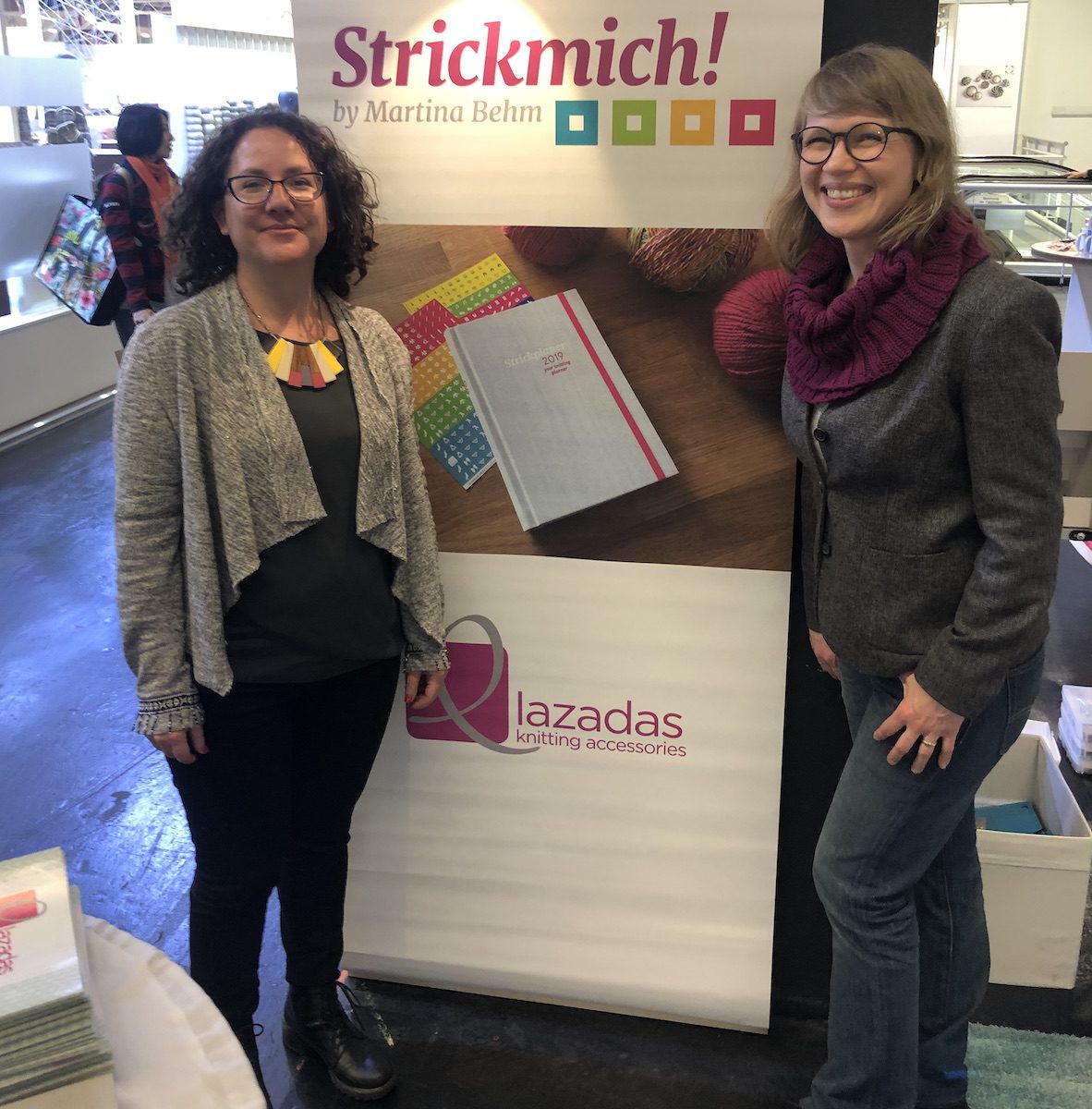
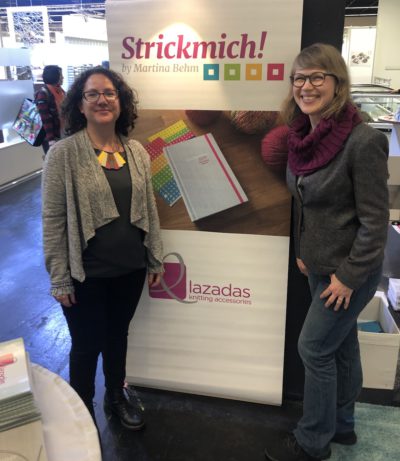
Blocking wire sets and innovative knitting accessories of the highest quality, imported from Israel – that’s Lazadas, and I am proud and happy that we carry them in Strickmich! Shop. At h+h cologne, the world’s largest fair for creative handicraft and hobby supplies, I have taken the opportunity to interview Astrid Lapidus, founder of Lazadas.
What’s the idea behind the Lazadas blocking wires? What makes them different from others?
After using “conventional”, rigid blocking wires and about 20.000 T-pins to block only one half-moon shaped shawl, I felt frustrated and thought “there must be another way”! Months later and after a lot of study and trials I developed the super flexible blocking wires: adapting to every shape, rust-free and making the process of blocking fast and easy.
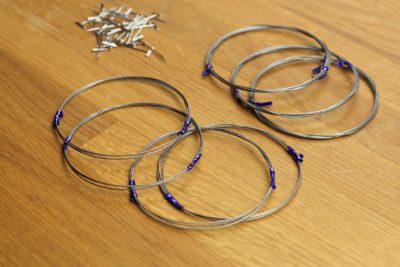
You live in Israel, but your blocking wires are in the process of conquering the entire knitting world. Where are they already available? How does that make you feel?
I am proud and honored that we produce high-quality knitting accessories in Israel and reach thousands of knitters around the world. You can find Lazadas knitting accessories at exclusive yarn shops all over the world.
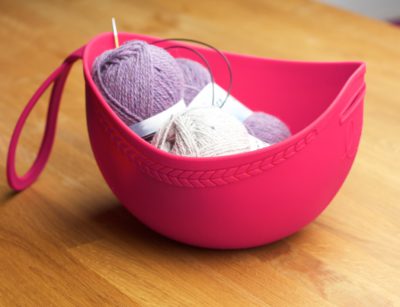
How did the famous Project Caddy come to be? Why did you choose such vibrant colors?
This is a funny story. With my friends, we use to meet and knit at bars in Tel Aviv. But putting the project bags on the table seemed no good idea because of the drinks, and placing them on the floor didn’t seem to be an alternative either – because of the drinks. Then, the Project Caddy idea was born. Waterproof, handy, versatile and pretty to match every fancy yarn. Jewel tones are my favorite!
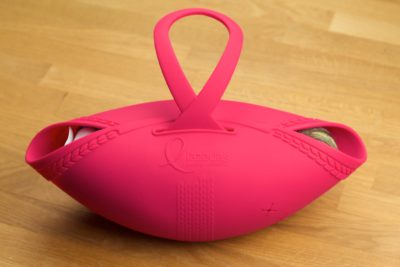
You are originally from Argentina. Is having an international background an advantage when it comes to understanding the needs of knitters around the world?
I think that experiencing different cultures and languages opens your mind. In fact, every time I travel, I try to attend a local knit meeting. I find the fiber community very welcoming, like a sorority.
The blocking wire sets are produced in an inclusive workshop in Israel. How did that collaboration evolve? What do you like about it?
We work in cooperation with ENOSH, the Israeli mental health association.
The workshop is located in the Arab city Umm al-Fahm. It’s very important for me an inclusive work environment where men, women, Jews and Muslims work together in peace. I hope in the future, more politicians will think like us.
Selago Sunset
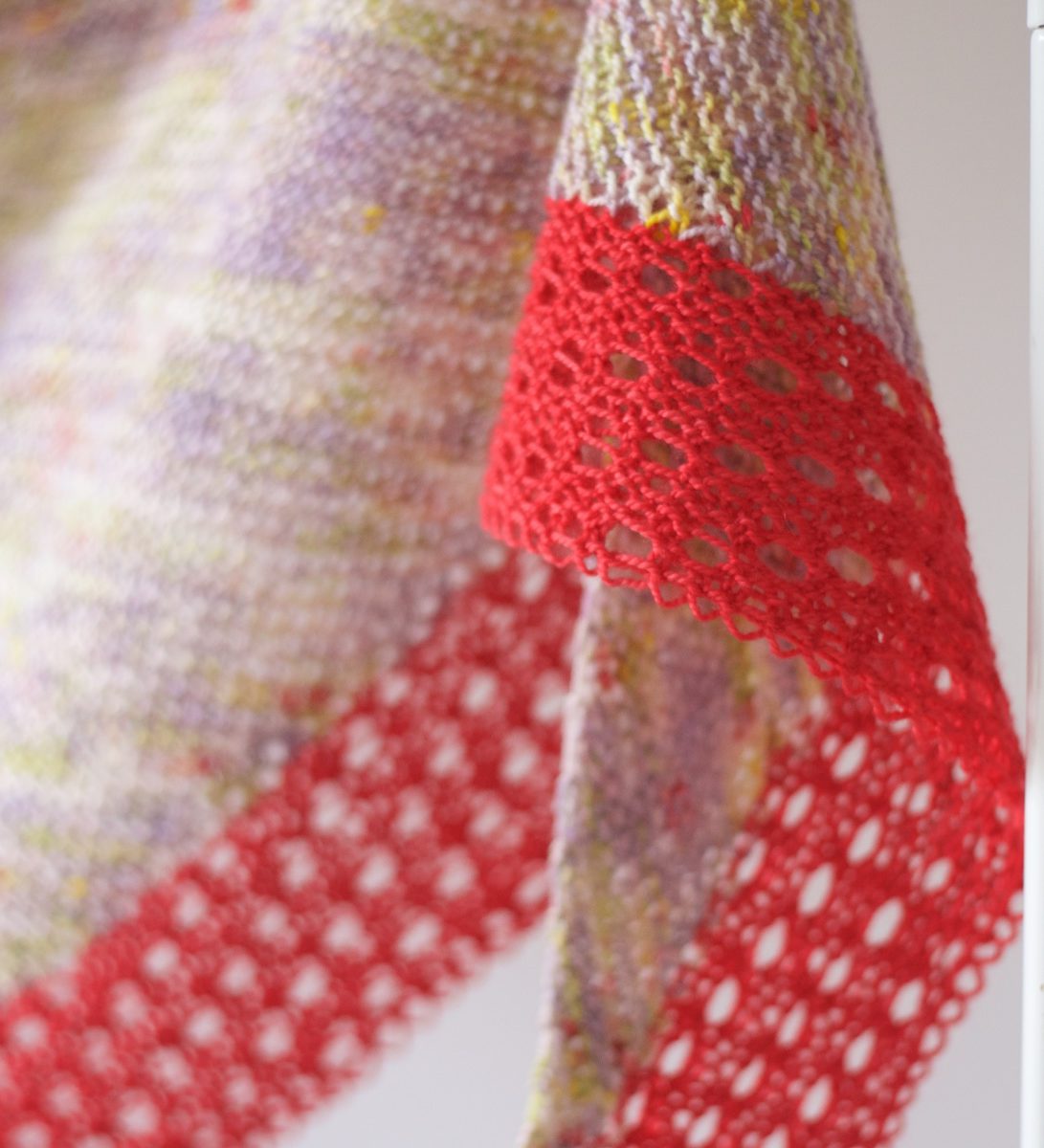
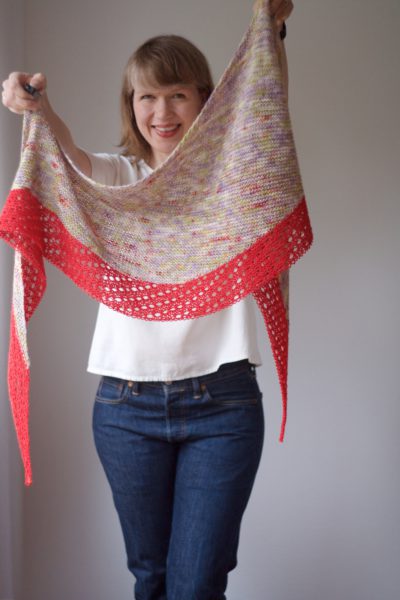
Warm, calming and fascinating to watch at the same time – that’s how sunsets are at the Cape of Good Hope, and this is the shawl that channels this feeling! Bright lavender and green on a light background make the saturated red speckles stand out and are a perfect setup for a simple lace border that is very easy to knit. No charts involved!
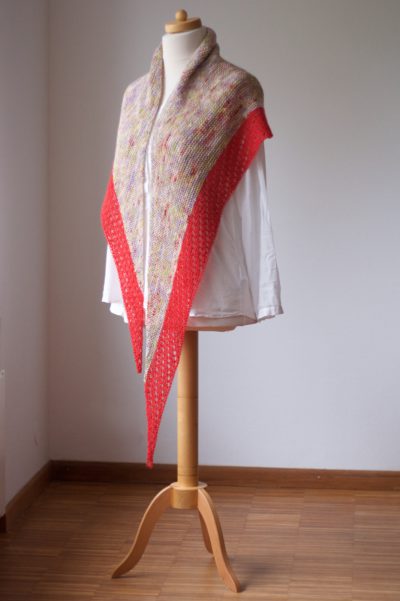
A half-circle knit on the bias is the main part of this shawl, the border is added later. The beauty of this pattern: You can just knit until your yarn is used up. So every little bit of the beautiful handdyed yarn is put to use, and there is absolutely no danger of running out of yarn in the process. The ideal project to lay back, watch a sunset and relax …
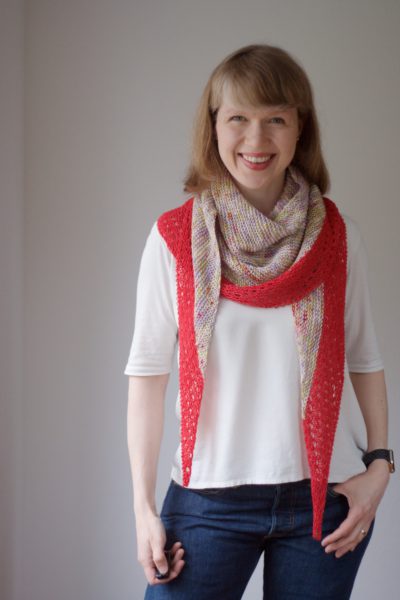
The yarn that Bridget Henderson of Cowgirlblues dyed for this Strickmich! Club Design is an extra soft Merino yarn with a pretty twist that is a pleasure to knit with. The colors are inspired by the blossoms of a plant called “Pseudo Selago” that Bridget has encountered during her walks around the Table Mountain. They look especially pretty in the light of the dawn, so she decided to name the colorway “Selago Sun”.
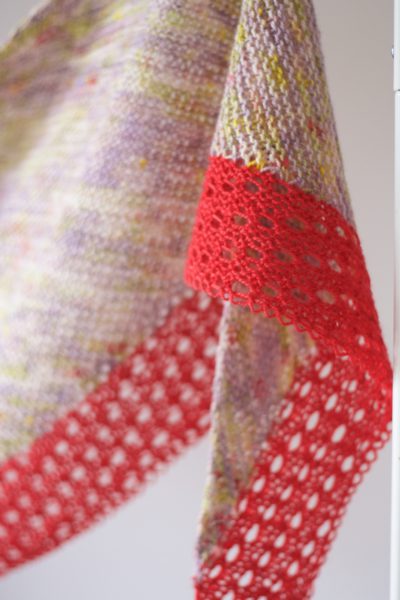
Find the pattern on Ravelry and in Strickmich! Shop, where we also carry the beautiful handdyed yarn by Cowgirlblues as well as a very limited number of kits in the club colorway and other color combinations.
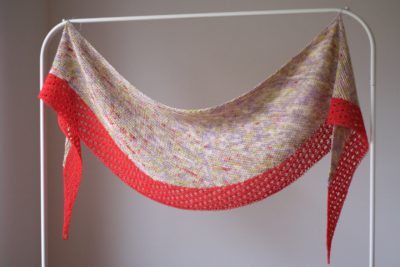
Strickplaner 2020 Sponsoring
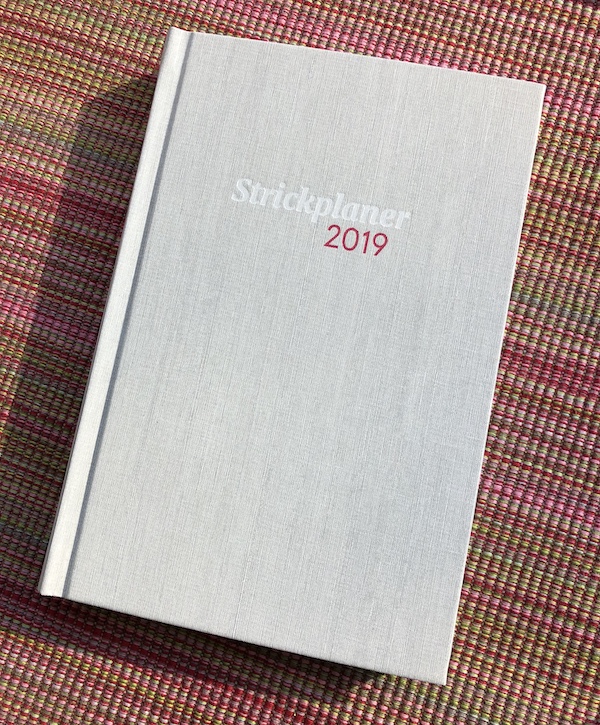
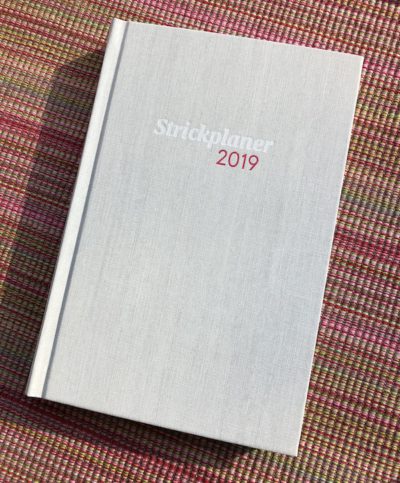
So cute, so useful and totally indispensable: Strickplaner – your knitting planner – has become a vital part of many knitters’ lives around the globe. I myself can’t imagine life without it, and so I am really happy to announce that we decided to go for another edition in 2020!
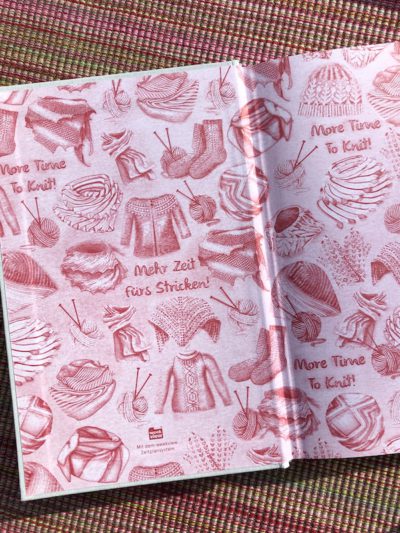
We will feature the pretty endpapers by artist Julie Levesque, the very robust cover with a textile feel, the beautiful berry-colored details, an elastic closure, ribbon bookmarks and high quality paper.
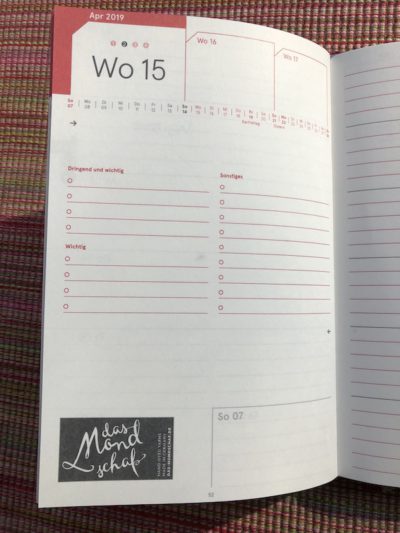
As in the past years, we would like to invite the knitting world to be part of Strickplaner and support this project through sponsoring. If you would like to be present in many knitters’ everyday lives, our weekly inspirations, banner or full-color pages are perfect for you – whether you are a dyer or yarn brand, accessory maker or desginer.
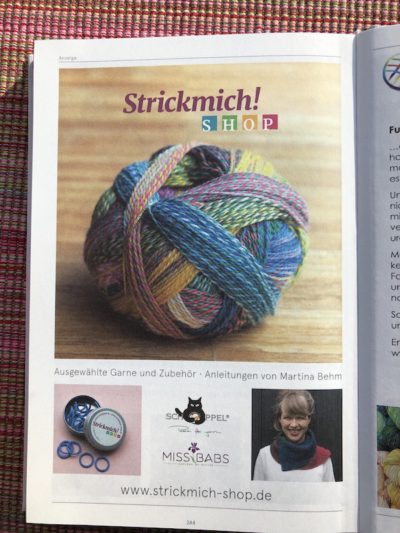
Drop me a line at planner (at) strickmich.de, and I will send you our media kit!
Wood Warbler Cowl
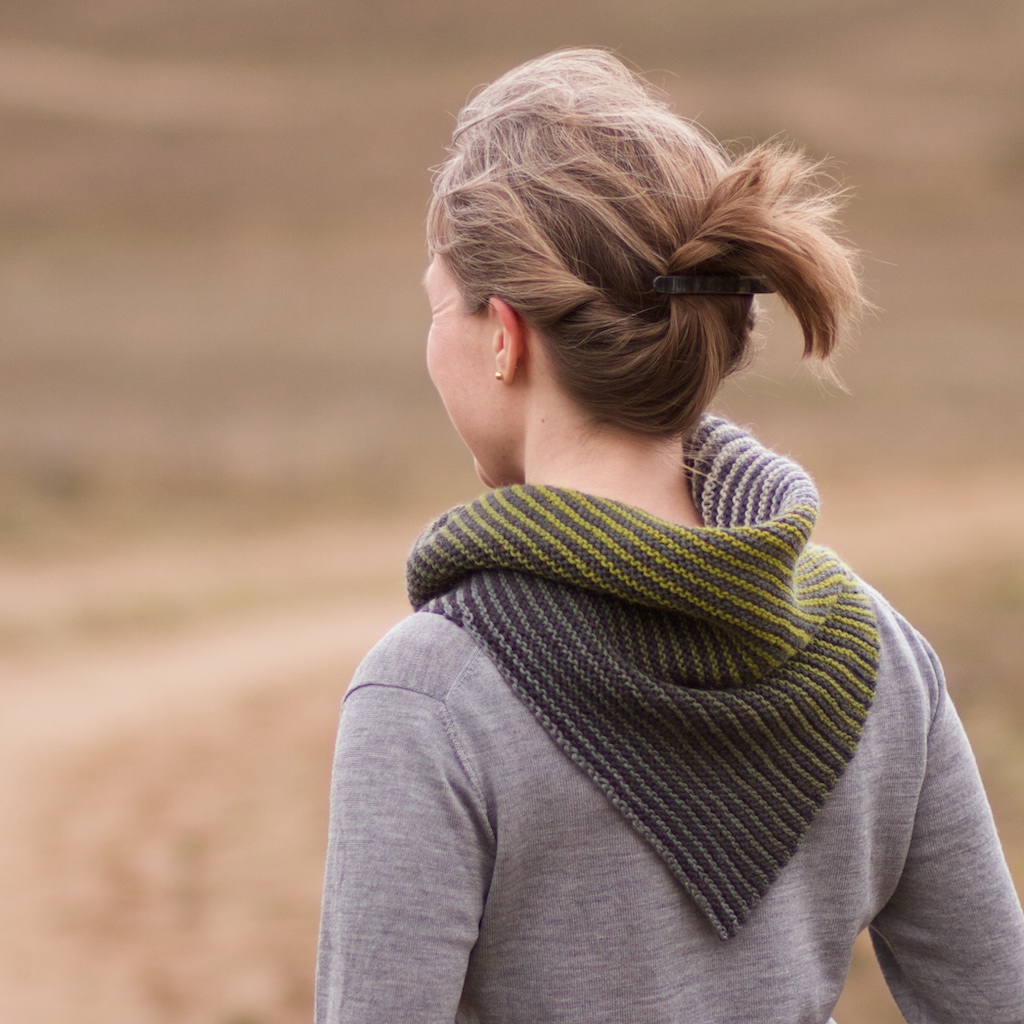
Gradient yarns are fascinating, and the fun doubles when you use two of them together: The constant color changes will produce new interesting stripes every couple of rows. Knit on the bias in garter stitch, this cowl makes use of a clever construction, resulting in a useful shape that will keep the back of your neck and your front warm and cozy.
This pattern was originally published in Jen Arnall-Culliford’s book “A Year of Techniques” in the chapter teaching you how to do a provisional cast on and garter stitch grafting.
Find Jen’s tutorials about these techniques on her website: www.acknitwear.co.uk
The pattern is now available on Ravelry and in Strickmich! Shop as a download and printed version. In Strickmich! Shop we carry the beautiful yarn “Schoppel Gradient” in lots of gorgeous colors, as well as kits in the color combination of the sample (“Schatten” and “Gelbfilter”).
Strickmich! Club 2019 Cast-on Video No. 1
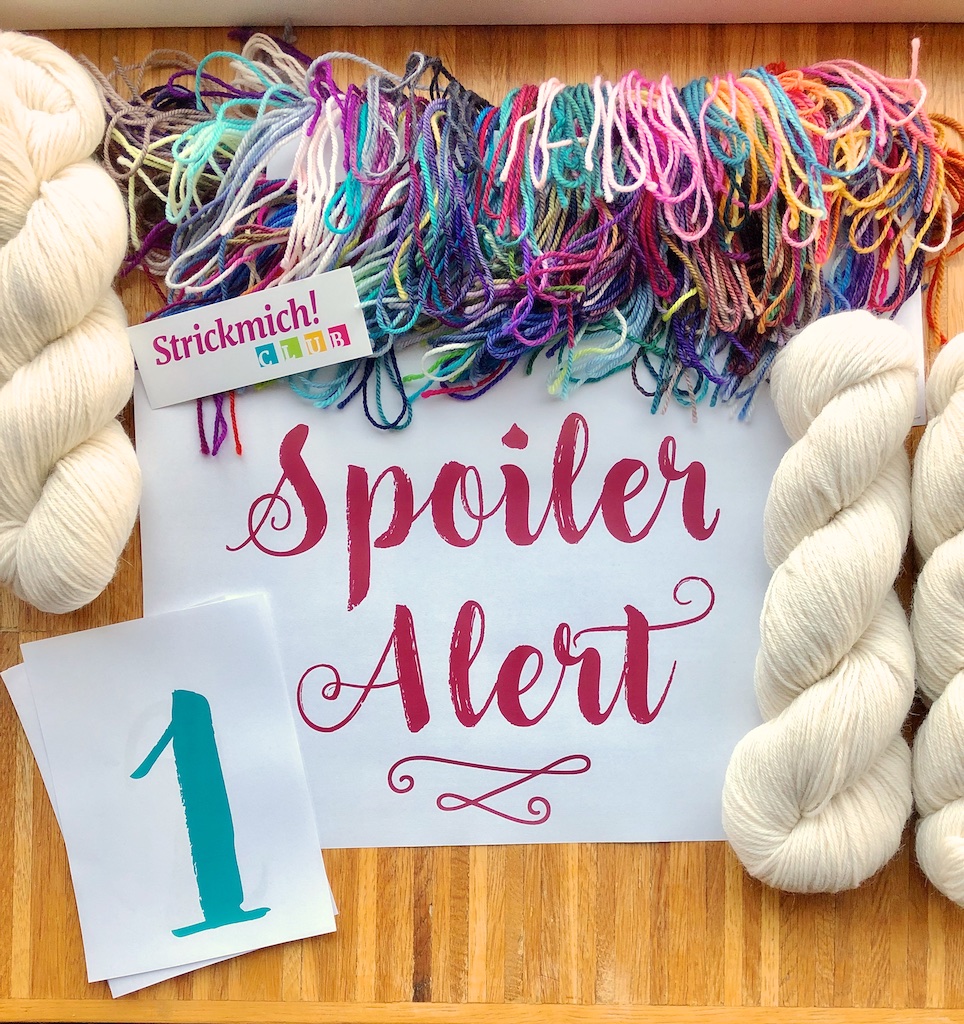
Here it is: The first virtual cast-on event of Strickmich! Club 2019. Enjoy!
P. S.: And don’t forget to watch us live on youtube at 12 noon German time!
Links to external pages vimeo.com and youtube.com.
No Mulesing, Please
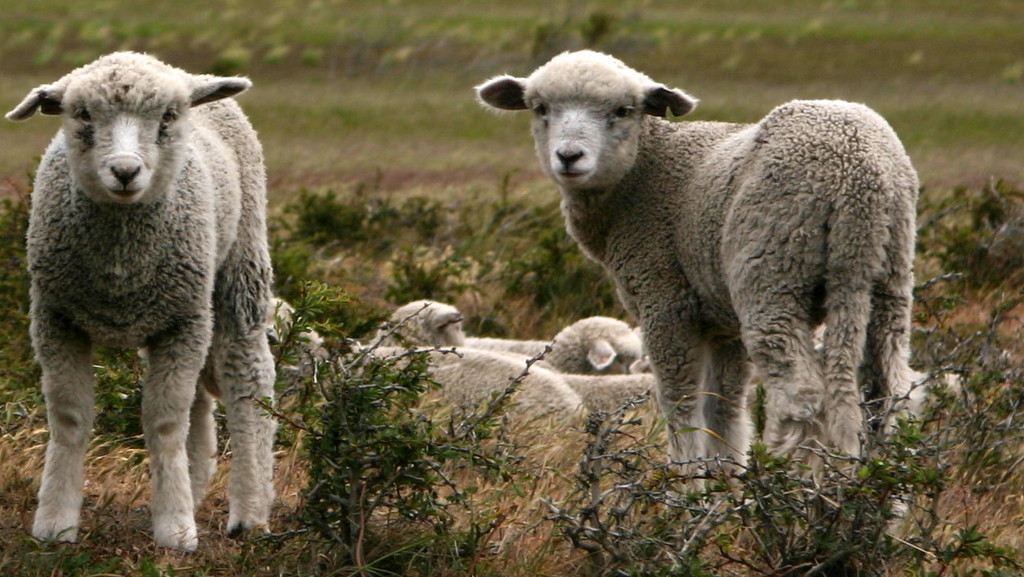
Patrick Gruban, co-founder and co-owner of German organic yarn pioneer Rosy Green Wool talks about mulesing of Merino sheep, and what knitters can do about this
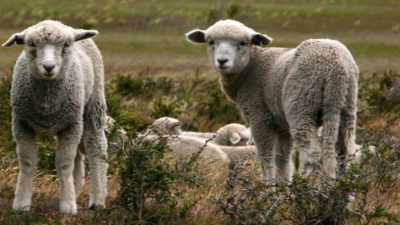
Merino lambs
Strickmich!: In Germany, reports about mulesing in Australian Merino sheep are in the news right now: The sheep’s skin around the buttocks is cut off without any painkillers. The practice has been widely criticized for a long time. Are only Merino sheep in Australia affected?
Patrick Gruban: Yes, Merino sheep are bred specifically to yield the maximum amount of fiber, so they have lots of skin and many skin folds. Into those folds, flies can place their eggs and maggots emerge, especially in the buttock area – this is called “flystrike”. Mulesing is not used in other sheep breeds.
Why is it only common in Australia?
The fly species that harms sheep only exists in Australia and New Zealand. Sheep in South Africa and South America won’t be affected. In New Zealand, farmers have made an effort to breed Merino sheep with fewer skin folds, so the problem of flystrike is not as pronounced there. New Zealand has also developed other methods to combat the flies, and last year they passed a law that prohibits mulesing entirely and sanctions it with heavy fines.
What are alternative methods to prevent flystrike?
If the farmer monitors his flock closely and checks on his sheep regularly, he will notice if anything is wrong and can take action. In Australia, flocks tend to be very large, they roam freely, and are often only monitored by helicopter. The farmer usually sees his sheep twice a year for shearing. Instead of cutting off the sheep’s skin, one could simply shear the area around the buttocks several times a year, so it would stay cleaner and attract fewer flies – but that would be a lot of work, and very expensive for Australian farmers, so only very few do it.

Patrick Gruban
Mulesing also won’t prevent the flies from laying their eggs on other parts of the sheep’s body…
No, but if there is a lot of wool growing on the skin, flies won’t find it so easy to reach the skin to lay their eggs. So it’s not such a big problem in other areas.
Would you consider if progress if anesthetics were used during the mulesing surgery?
It’s not clear how much that would help – the sheep would certainly feel pain until the wounds are healed, which can take several weeks. But it would certainly be a step in the right direction, especially as the problem has been known for years. 70% of all mulesing still happens without painkillers – in my view, that’s outrageous, and can only be explained by farmers’ focus on profits and their greediness. The price for Merino fiber has gone up by 50% during the past years, so they would still earn enough if they were to spend a small amount on anesthetics.
The Australian government could simply pass a law that forbids mulesing…
Sure, especially as Australian sheep farmers have been aware of the problem for more than 15 years. In 2004, there was an initiative to get rid of mulesing until 2010, but that date has passed and nothing has happened. It is always hard to change things when it comes to animal welfare – we see that now in Germany, where the government is trying to pass a law against neutering pigs without painkillers. It takes forever to reach a consensus.
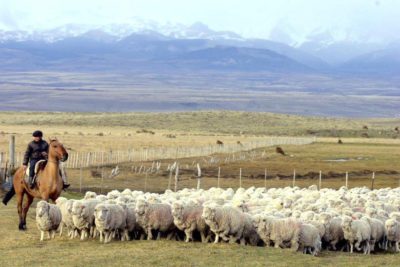
So, if I wanted to buy Merino yarn that was made without mulesing, I could just make sure that the fiber comes from South America, South Africa or New Zealand?
Yes, but that can be difficult, as very few brands can give detailed information about the origins of the fiber or even the sheep breed they used. Some just put “wool” on their label and won’t tell you it is Merino that could be affected by mulesing. Sometimes the supply chain is so long and obscure that it is impossible to tell where the fiber came from: The yarn brand buys from the spinning mill, the spinning mill from a fiber wholesaler, the wholesaler from the producer and so forth. With hand dyers who buy their yarn from a yarn wholesaler, there is an additional step involved. The whole chain relies on trust: The yarn brand or dyer says the yarn is mulesing-free, but cannot really prove it. However, 90% of all Merino fiber worldwide is from Australia, so you need additional proof that they are not part of the yarn you are buying. That’s why we decided right from the beginning that we needed the GOTS certificate – Global Organic Textile Standard. We are also aware how hard it is for hand dyers to find certified yarn bases, so we decided to offer our yarn to them, too.
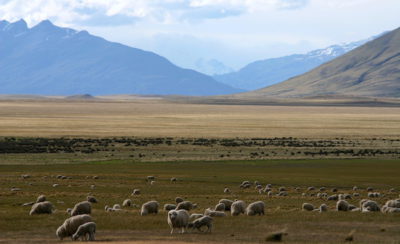
Why are yarn brands so shy about the topic? There are several around that have been using only Merino fiber from South America or South Africa for years…
If you make a statement like “our yarn is mulesing-free” you kind of lock yourself in, and become less flexible in case of a shortage. At Rosy Green Wool, we cannot use other sources for our Merino fiber and have to make long-term contracts with the suppliers from South America, stating how much we will buy in the upcoming years. That’s quite a risk. For us, it’s even harder as we are the only yarn brand in the world that offers only GOTS-certified yarns, so we cannot use cashmere or silk in our yarns as they are very hard to come by in that quality.
Are hand knitters more aware of mulesing than consumers who buy ready-made clothes?
Yes, especially those who are interested in high-quality hand knitting yarns. But according to my estimates, more than 99.5% of all knitting yarns sold in Germany are still not GOTS-certified. A couple of yarn brands might be in the clear without a certificate because they have a short supply chain, or personally know the farmers providing their wool, and offer mulesing-free Merino – but in the end, they lack the transparency that only a label can provide.
Has the attitude of handknitters towards animal welfare changed since you started out with Rosy Green Wool in 2012?
Mulesing as a discussion point comes up roughly every five years, but I think that’s not enough. We often hear from people who say they became aware of the problem through our yarn, and that they decided to pay more attention to whether a yarn is certified or not in the future – that’s a huge compliment for us!
GOTS
The Global Organic Textile Standard is the strictest label for textiles produced environmentally friendly, socially conscious and animal friendly. If you buy clothes or yarn carrying the GOTS label, you can be sure that…
• the animals were raised according to high welfare standards, no mulesing took place, and no pesticides were used
• that fair working conditions apply, and no child work was involved
• no chemicals that might harm the environment or human health were used
• waste water is professionally treated, energy use is controlled
• no chemical moth-repellants were used.
More on www.global-standard.org
Rosy Green Wool
Was started in 2012 by Rosmary Stegmann and Patrick Gruban in Munich, and launched Germany’s first GOTS-certified machine-washable Merino yarn for hand knitters. Rosy Green Wool is the only yarn brand in the world that offers only GOTS-certified yarns.
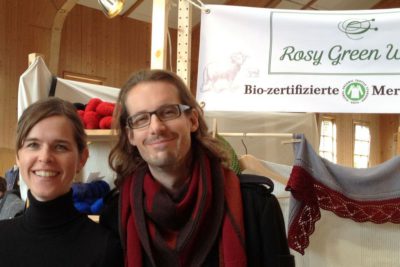
These Yarns in Strickmich! Shop are mulesing-free:
Blacker Yarns (Merino from the Falkland Islands plus Shetland wool)
Schoppel (Merino fiber from Patagonia)
Something to Knit With (Highland Wool from Peru + Alpaca)
Rosy Green Wool (GOTS-certified yarns with Merino fiber from Argentina)
Amano (Alpaca yarns)
Cowgirlblues (Merino fiber from South Africa plus Mohair)
Fino by Manos del Uruguay (Merino fiber from South America)
Yummy 2ply and Yowza by Miss Babs (Merino fiber from South Africa)
Yakusi (Yak Fiber plus Silk )
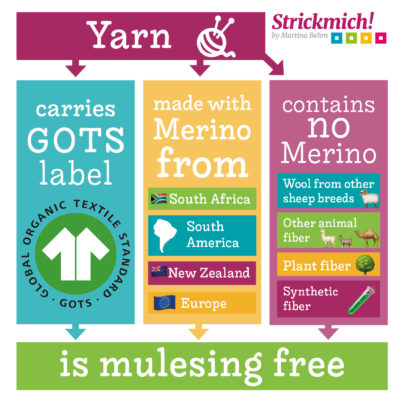
Fotos © Rosy Green Wool

